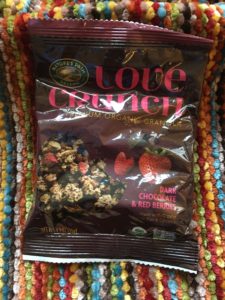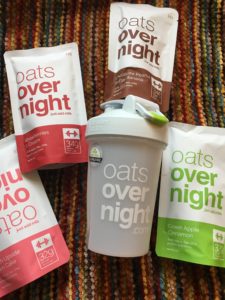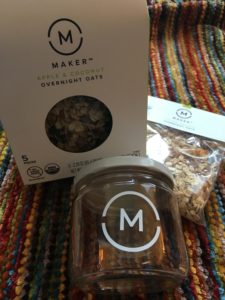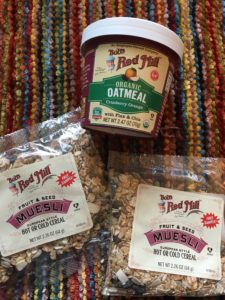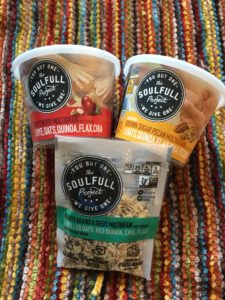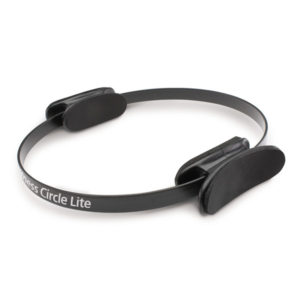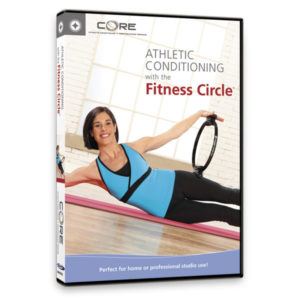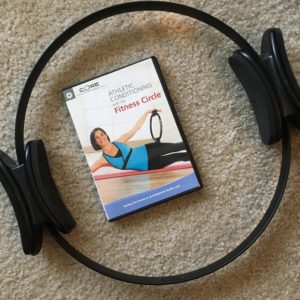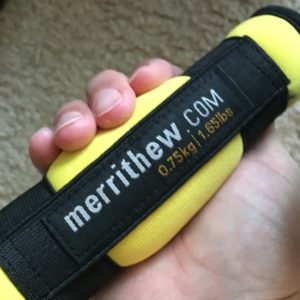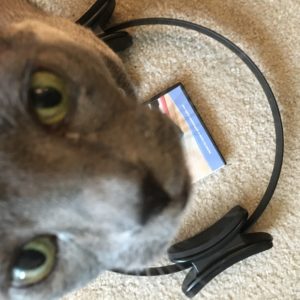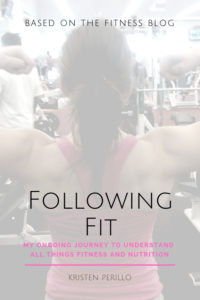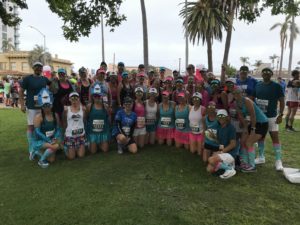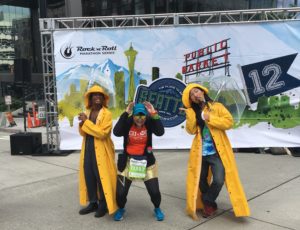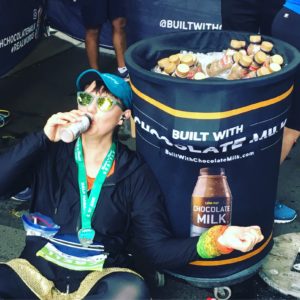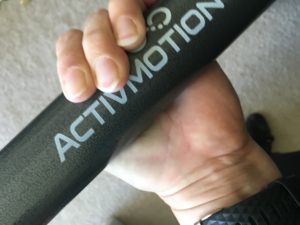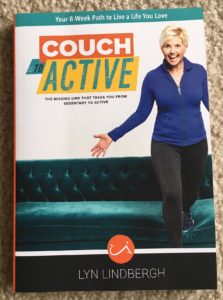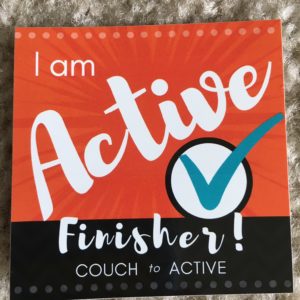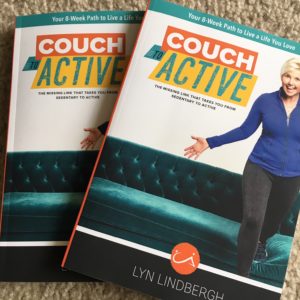On the Seventh Day of Christmas, I encourage you to choose a fitness challenge for January. (Yes, the Seventh Day of Christmas. go look it up if you don’t believe me!)
January is one of the biggest months for fitness and workout challenges! Lots of gyms, studios, and boutique fitness locations host a January challenge to encourage people to start to build healthy habits to back their New Year’s resolutions. For example, Gold’s Gym has a 12-week challenge for gym members only. Some OrangeTheory Fitness locations will start their transformation challenges in January. And it’s not just the big chains and franchises: a quick google search led me to wish I lived in Charleston, South Carolina so I could do the Ignite 2019 challenge at This Time Fitness.
Online Fitness Challenges Work Just As Well
Personally, I find that a fitness challenge is a great way to help me stay on track, and you don’t have to belong to a gym or studio to participate. One of the groups I managed on Facebook has had lots of success with a monthly-themed challenge. If you prefer to work out at home, want to save money, or you just live too far from any facility offering a challenge, there are LOADS of options. The same goes for not starting in January. Maybe you’re moving house, changing jobs, having a baby, or otherwise just not down with January. Many sites with streaming content, such as Yoga International, have all sorts of options that you can start any time you want!
In general, an online or virtual workout challenge will include (1) a workout plan or template, (2) a qualified professional (e.g. for a running challenge, a coach with Revo2lution Running, RRCA, or USATF certification), (3) a Facebook group or other forum for chatting with other participants, and (4) prizes (maybe). Not every challenge includes all of these items, and some may include more–videos, printables, etc. Depending on the challenge’s rules, you might be required to check in each day, submit photos, or provide measurements–but don’t let that stop you. MANY challenges don’t have any requirements, and you can play along with any challenge by doing the workout even if you don’t submit materials to win prizes.
I’m collecting up all the challenges I can find to share with you–pick one and jump right in! (There’s still plenty of time to choose and get ready!)
The Challenges
Run the Year 2019
Website: https://runtheedge.com/run-the-year-2019/
Challenge: Run 2019 Miles (or your choice of miles) alone, or as part of a team
Led by: Run The Edge (Adam Goucher, Tim Catalano, and friends)
Start/Duration: January 1 to December 31, 2019
Cost/Discount: $25, $37, $57 (depends on swag pack selected) $3 discount if you use my affiliate link: http://runtheedgestore.refr.cc/elizabethbain
Content: Basic package includes access to the tracker (online/mobile), RTY 2019 Mileage Guide and plan, private Facebook groups, access to RTY FIT (a community for planning meet-ups) and local/regional Facebook groups. I expect there will be some fun monthly challenges as well!
Swag: Upgrade to Deluxe to add a Challenge Medal, Legacy Coin for 2019, a mileage tracking poster and stickers. Upgrade to Get It All to add a hi-tech challenge shirt.
Disclosure: I have done this challenge every year it has existed, and I collect the Legacy Coins. I am the Lead FITster for Portland, Oregon and the moderator of the related Facebook group. If enough people use my affiliate link, I get credit to use in the Run The Edge store.
100ABChallenge
Website: https://www.blogilates.com/100abchallenge-begins-jan-1st-you-in/
Challenge: Perform 100 reps of a specific Pilates abs exercise every day
Led by: Cassey Ho, aka Blogilates
Start/Duration: January 1 to January 31
Cost/Discount: Free
Content: Printable calendar of exercises, daily video of each exercise performed by Cassey. (If you haven’t checked out the Blogilates YouTube channel, you should! There are free workouts in the app, too. Plus if you subscribe to the newsletter, every month there is a new workout calendar–free–with a theme or focus.) There is a designated hashtag for social media posting/community
Swag: None (but it’s FREE)
Disclosure: I’m a huge fan of Cassey. Nicest most real-deal Pilates instructor I have ever had the pleasure to meet.
30-Day Be a Better You Challenge
Website: https://grokker.com/individuals
Challenge: choose from four challenge options (mindfulness, healthy eating, fitness, yoga)
Led by: Various instructors on grokker
Start/Duration: January 2 to January 31, 2019
Cost/Discount: Free if you are new to grokker, with a 37-day trial period (but after January 31, access to grokker is $14.99/month OR you can choose to pre-pay a year at $9.99/month OR you can cancel)
Content: 30 videos selected by the grokker team (but you also have access to all of the other videos on grokker during your trial)
Swag: Four winners who accrue more than 100 points will receive an an Apple TV; winners selected via raffle/random drawing from all eligible participants
Disclosure: I signed up for the yoga challenge–why not? I’ve never tried grokker. (Look for a review sometime later…)
The Barre3 January Challenge
Website: https://barre3.com/januarychallenge
Challenge: Follow the barre3 and Headspace Mindfulness Plan
Led by: instructors from barre3 (including founder Sadie!) and Headspace
Start/Duration: January 7 to February 3, 2019
Cost/Discount: $29 online OR $99 in studio
Content: Online option: unlimited access to 500+ Barre3 classes online (auto-renews on February 4, 2019 unless you cancel) OR Studio option: unlimited Barre3 classes in studio and free unlimited access to Barre3 online. Both options include one free month of the Headspace app, the Mindfulness Plan, and daily email with the daily plan.
Swag: None. You can purchase optional equipment (light hand weights, yoga mat, resistance band, core sliders, core ball) when you register.
Disclosure: I’ve enrolled in this challenge twice…and never actually finished it. Oops. Of all of the barre-based workouts, Barre3 is in my top two for quality of instruction and programming, and for being rooted in the science of movement. Unlike so many other barre-based workouts, this one won’t send you straight to the chiropractor!
Whole Life Challenge
Website: https://www.wholelifechallenge.com
Challenge: Commit to seven habits, every day, for six weeks.
Led by: Andy Petranek, Michael Stanwyck, and the WLC team
Start/Duration: January 19 to March 1, 2019 (additional challenges start in April, July, and September)
Cost/Discount: $39 for new players, $29 for returning players; $89 Annual Membership (four challenges)
Content: “The Whole Life Challenge is a six-week online, community-building, habit-changing game that challenges you to create a happier, healthier life by making small changes to your daily habits. Playing along with your friends, and family, you’ll score points every day, focusing on seven key areas of health and well-being: nutrition, exercise, mobilization, sleep, hydration, lifestyle practices, and reflection.”
Swag: Swag includes use of the app to track points, the Whole Self Assessment, and the online community. There are no prizes. The website includes free e-books you can read before you start.
Disclosure: I have zero personal experience with this one. A friend of mine who does shift work has, and he mentioned being disappointed that the app tracked the day as ending at a certain time, causing him to “lose” some days.
30-Day Get Strong in 2019 Challenge
Website: https://www.livestrong.com/article/1012163-30day-slim-down-challenge/ (blog post/preview) https://www.livestrong.com/get-strong-challenge/ (signup)
Challenge: 30 days of exercises and nutrition (new healthy recipes to try out)
Led by: Workouts by Jordan Shalhoub, other content by the Livestrong.com team
Start/Duration: January 2
Cost/Discount: Free
Content: Daily email with a workout, recipes, motivational memes, playlist, and tips and advice. In addition to daily-themed workouts, and a healthy tip for each day, each week also has a health goal. Challengers have access to a Facebook group just for challengers.
Swag: None
Disclosure: I have no experience with this challenge.
Fit Chicks 28-Day Challenge
Website: https://www.fitchicks.ca/challenge
Challenge: Daily workouts and nutrition plans for women to build habits
Led by: Laura Jackson, founder of Fit Chicks
Start/Duration: January 1 to January 31
Cost/Discount: $297 (though the website showed me a $97 offer)
Content: 28 workouts under 30 minutes, 50 exercise tutorials, 8 streaming workouts, meal plans (vegan and vegetarian options available) with grocery lists, 45 simple recipes, healthy lifestyle videos, daily email motivation, Facebook group, private members site, email support.
Swag: None (that I know of); additional purchases offered at a discount
Disclosure: I have no experience with this challenge; I thought a challenge for women only might appeal to some of my friends. The challenge page has some video workout previews.
The Self Challenge
Website: https://www.self.com/join/sign-up-new-years-challenge
Challenge: workouts and fit tips, including suggested meal plans
Led by: contributors to Shape
Start/Duration: January 2, 2019
Cost/Discount: Free
Content: a workout plan, meal plans, nutrition tips, and more via email. Facebook group to talk all things challenge.
Swag: None, but there are prizes. Sweepstakes prizes include a vacation at the Grand Fiesta American a Coral Beach.
Disclosure: True confession, I have a soft spot for this challenge, which I first participated in way back in the 1990s. This year’s program includes 20 new bodyweight workouts, daily emails with motivation and advice, a Facebook group.
Gixo #FitForward Challenge
Website: Use Alyse’s affiliate link to get your free first week
Challenge: I’m fuzzy on the details right now, but I bet it’s a month of workouts and sharing on social!
Led by: Gixo trainers
Start/Duration: January 1
Cost/Discount: first week is free, then $19.99/month (or $14.99/month if you pre-pay a year)
Content: live audio and video classes via the Gixo app. These are NOT pre-recorded videos you can play over and over, but a live class, with an instructor teaching in real time, and other classmates sweating right there with you.
Swag: Unknown at this time–I’ll update as I learn more!
Disclosure: While I am not (yet?) a Gixo subscriber, I am a Sweat Pink ambassador, and Sweat Pink has an ongoing relationship with Gixo.
Lululemon 40/80 Challenge
Website: https://www.strava.com/challenges/lululemon-40-80-challenge-2019
Challenge: Run 40k or 80k in the first two weeks of the year
Led by: YOU!
Start/Duration: January 2 to January 15, 2019
Cost/Discount: Free (Strava’s premium membership, Summit, is optional; pricing varies–an “all three pack” is $5/month when you pre-pay a year)
Content: Go run! Use Strava to record your runs, or use a device (such as Vi) that connects with Strava.
Swag: Unknown–it’s a surprise every year. Last year there was a discount code good for online or in-store purchases. Also, you get a badge in the Strava app.
Disclosure: I’ve run this one, and am signed up for 2019. If you are training for a race, like to run with friends, or already track your miles, go for it!
New Year Yoga Reboot Challenge
Website: https://www.yogadownload.com/Challenge.aspx
Challenge: 3o minutes of yoga for 30 days
Led by: rotating instructors on the YogaDownload platform
Start/Duration: January 2 to January 131, 2019
Cost/Discount: $12 for one month of unlimited access to Yoga Download ($30 for three months, $90 for a year; all are cancel at any time)
Content: A curated selection of “reset” and “reboot” yoga videos. Log in each day, do that day’s video, and then leave a comment about how it went. NOTE: if you like the idea of a daily yoga challenge but the idea of “reboot” doesn’t do it for you, Yoga Download also has a variety of other challenges (e.g. 5-Day Evening Yoga, 2-Week Yoga for Busy People, etc.).
Swag: Unknown–there is a grand prize package, but I haven’t scoped it out.
Disclosure: I’ve had a Yoga Download membership for years, so I’m in!
Other Challenges…
In your neighborhood. Since January is absolutely the most popular challenge month, there are literally dozens of other options. Check the website for your local gym, yoga space, cycling studio, or boutique fitness class for special class packs and challenges.
Online. Also check out Instagram! One of my Sweat Pink sisters, Katie Arnold, aka @iamkatiearnold, is hosting a yoga challenge in 2019. You can read all of the details on her blog: http://www.talkless-saymore.com/weekly-workout-wednesday-13/
Did I miss your favorite? Drop a comment and share it!
